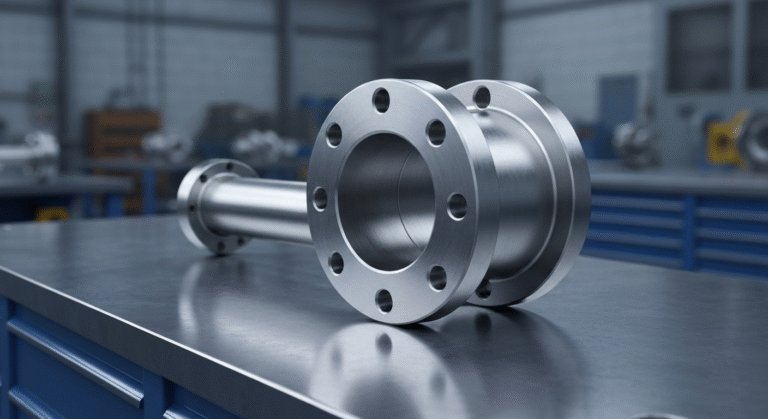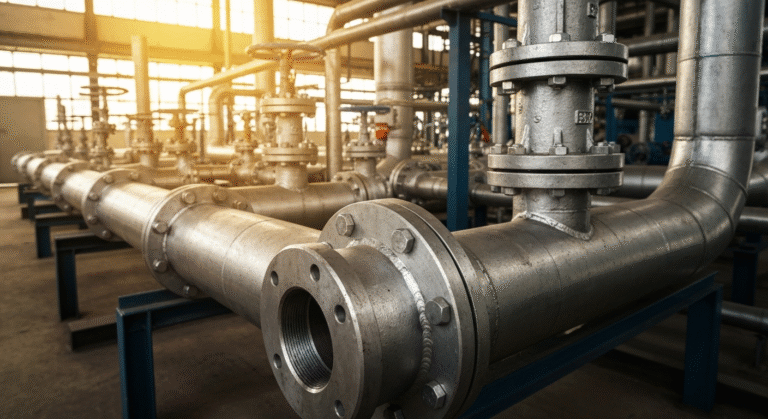-
Промышленная зона Иньчжуан, уезд Мэнцюнь, город Цанчжоу, провинция Хэбэй, Китай
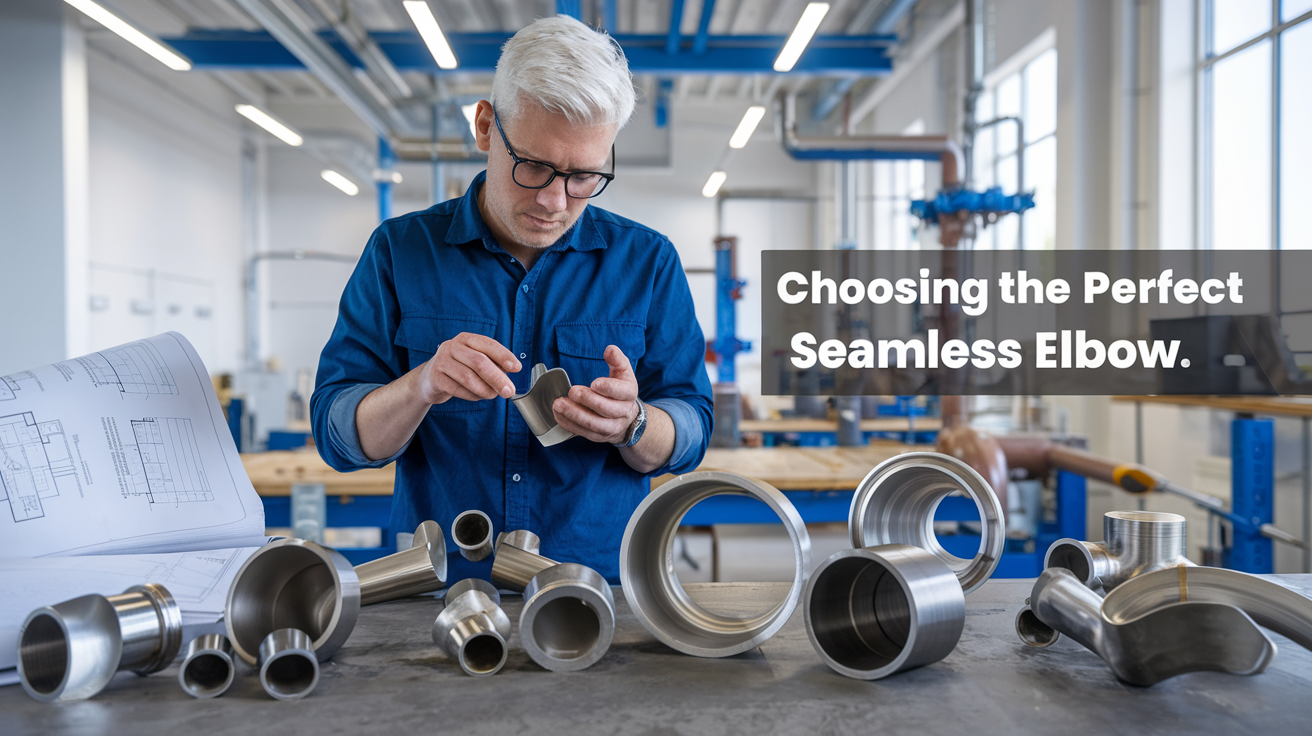
Как выбрать идеальное бесшовное колено для вашего проекта
Ever been stuck on a project deadline while your team argues over which seamless elbow fitting to use? Yeah, that pressure feels like trying to fit a square peg in a round hole – literally.
Selecting the right seamless elbow isn’t just about picking a metal tube. It’s about ensuring your entire piping system performs flawlessly under pressure for years to come.
Whether you’re handling high-temperature fluids in a chemical plant or building pressure systems for offshore applications, your choice of seamless elbow can make or break your project. The right material, proper dimensions, and correct specifications save you from costly failures down the line.
Let me walk you through the four critical factors that seasoned engineers consider before making their final decision – and why the third one surprises even veterans in the field.
Understanding Seamless Elbow Types

Different Materials and Their Benefits
Choosing the right material for your seamless elbow isn’t just about durability—it’s about matching your specific project needs. Carbon steel elbows are workhorses in the industry, handling high pressures while keeping costs reasonable. They’re perfect for oil and gas applications where strength matters more than corrosion resistance.
Stainless steel seamless elbows cost more, but they’re worth every penny when you’re dealing with corrosive materials. The 304 grade handles most chemical environments, while 316 tackles the really nasty stuff like seawater and aggressive chemicals.
Alloy steel options like chrome-moly give you that sweet spot of heat resistance and strength when temperatures climb beyond what standard materials can handle.
For truly demanding environments, consider exotic materials:
- Duplex stainless steel: combines strength with exceptional corrosion resistance
- Inconel: stands up to extreme heat and oxidation
- Copper nickel: perfect for marine applications
Standard vs Custom Sizing Options
The pipe sizing world revolves around two main standards: NPS (American) and DN (international). Most projects can use these standard sizes, ranging from tiny 1/2″ up to massive 48″ diameter elbows.
But sometimes, standard just doesn’t cut it. Custom sizing becomes critical when:
- You’re retrofitting to match existing irregular pipework
- Space constraints demand precise dimensions
- Flow requirements call for non-standard angles beyond the typical 45° or 90°
Custom options typically involve longer lead times and higher costs—something to factor into your project timeline and budget. But they might save you headaches down the road when standard sizes would require complicated workarounds.
Pressure and Temperature Ratings Explained
Those numbers stamped on your seamless elbow? They’re not just for show. Pressure ratings (like Class 150, 300, or 600) tell you exactly how much pressure your elbow can handle at specific temperatures.
Temperature dramatically impacts pressure capacity. An elbow rated for 1000 PSI at room temperature might only handle 750 PSI when things heat up to 400°F. This relationship is standardized in pressure-temperature charts that are absolute must-reads before selection.
Wall thickness plays a crucial role here. Schedule numbers (like Sch 40 or Sch 80) indicate thickness—higher numbers mean thicker walls and higher pressure capacity. But remember, thicker isn’t always better if weight or material costs are concerns.
Short Radius vs Long Radius Elbows
The radius factor makes a bigger difference than most people realize. Long radius elbows (with radius = 1.5 × pipe diameter) create smoother flow with less turbulence and pressure drop. They’re the go-to choice for most systems where efficiency matters.
Short radius options (radius = 1.0 × pipe diameter) save space in tight installations but create more turbulence. This makes them less ideal for:
- High-velocity systems
- Slurry applications where particulates could cause erosion
- Any system where pressure loss is a concern
The trade-off is simple: space savings versus flow efficiency. In most industrial applications, long radius elbows prove worth the extra space they require through reduced maintenance and pumping costs over the system’s lifetime.
Key Factors to Consider Before Purchase

A. Project Requirements Assessment
Ever bought shoes that looked amazing but felt like torture devices? That’s what happens when you choose elbows without assessing your project requirements first.
Start by answering these basic questions:
- What’s your pipe diameter?
- What pressure will the system handle?
- What temperatures will the elbow endure?
- What’s flowing through your system?
Don’t guess these answers. Measure twice, purchase once. If you’re replacing an existing elbow, examine it for wear patterns—they tell you where improvements might be needed.
B. Industry Standards and Compliance
Cutting corners on compliance is like skipping seatbelts—it might seem fine until it’s not.
Your elbow must meet specific industry standards:
- ASME B16.9 for factory-made wrought buttwelding fittings
- ASTM A234 for piping fittings of wrought carbon steel
- ASME B31.3 for process piping
Many projects require certification documentation. Have this conversation with suppliers before purchasing, not after your inspector flags an issue.
C. Budget Constraints vs Quality Needs
The cheapest elbow often becomes the most expensive when you factor in early replacement costs and downtime.
Consider this cost breakdown:
| Cost Factor | Low-Quality Elbow | High-Quality Elbow |
|---|---|---|
| Initial Cost | Нижний | Выше |
| Replacement Frequency | More frequent | Less frequent |
| Downtime Costs | Выше | Нижний |
| Total Lifetime Cost | Often higher | Often lower |
The real question isn’t “How much does this elbow cost?” but “How much will this elbow cost me over time?”
D. Installation Environment Considerations
Your elbow’s environment is trying to destroy it. Seriously.
External factors matter enormously:
- Will it be exposed to corrosive elements?
- Is it underground or exposed to weather?
- Will it experience vibration or physical impacts?
- Are there temperature fluctuations that could cause expansion/contraction?
An elbow perfect for indoor, controlled environments might fail spectacularly in harsh outdoor conditions.
E. Flow Capacity Requirements
Flow disruption costs money every operating hour through increased pumping costs and system inefficiency.
When analyzing flow requirements:
- Calculate your required flow rate
- Consider pressure drop across fittings
- Evaluate potential for erosion in high-velocity applications
- Determine if flow turbulence will be problematic
Long-radius elbows generally create less turbulence than short-radius ones, which matters tremendously in high-flow or slurry applications.
Evaluating Quality Indicators

Wall Thickness Uniformity
Quality matters in seamless elbows – and wall thickness uniformity should be top of your checklist. An elbow with inconsistent wall thickness is a disaster waiting to happen. The thinner areas become weak points under pressure, leading to early failure.
When examining a seamless elbow, run your hand along the inside and outside curves. Feel for any thinning, especially at the outer radius where material stretching occurs during manufacturing. The best manufacturers maintain thickness variation within ±5% of specifications.
Don’t just take a supplier’s word for it. Ask for ultrasonic testing reports that map wall thickness throughout the elbow. Your project deserves nothing less.
Surface Finish Importance
You might think surface finish is just about looks. Think again.
A properly finished seamless elbow offers:
- Lower friction losses (saving pump energy)
- Better flow characteristics
- Higher corrosion resistance
- Reduced risk of contamination
- Fewer places for material buildup
For critical applications like pharmaceutical or food processing, surface roughness values below 0.5μm Ra are often necessary. Industrial applications might tolerate 1.6-3.2μm Ra. Examine elbows under bright light – any pitting, tool marks, or orange peel texture suggests poor quality control.
Certification and Testing Documentation
The paperwork matters as much as the product. Never purchase seamless elbows without proper documentation. At minimum, you need:
- Material Test Reports (MTRs) verifying chemical composition
- Pressure test certifications
- Dimensional inspection reports
- Heat treatment verification (when applicable)
- Traceability documentation
Smart buyers request non-destructive testing results like X-rays or ultrasonic tests for critical applications. These reveal internal flaws invisible to the naked eye.
Manufacturer Reputation
The company behind the elbow tells you everything about what you’re buying. Research potential suppliers thoroughly.
Industry veterans with decades of experience typically have refined manufacturing processes and strict quality control. Check how long they’ve been in business, but don’t stop there. Look for:
- ISO certifications (9001, 14001)
- Industry-specific approvals (ASME, API, etc.)
- Customer reviews and testimonials
- Project references in your industry
- Warranty terms and claims process
A reputable manufacturer stands behind their products with clear warranty terms and responsive technical support. They’ll also help you select the right elbow for your specific application rather than just trying to make a sale.
Matching Elbows to Specific Applications
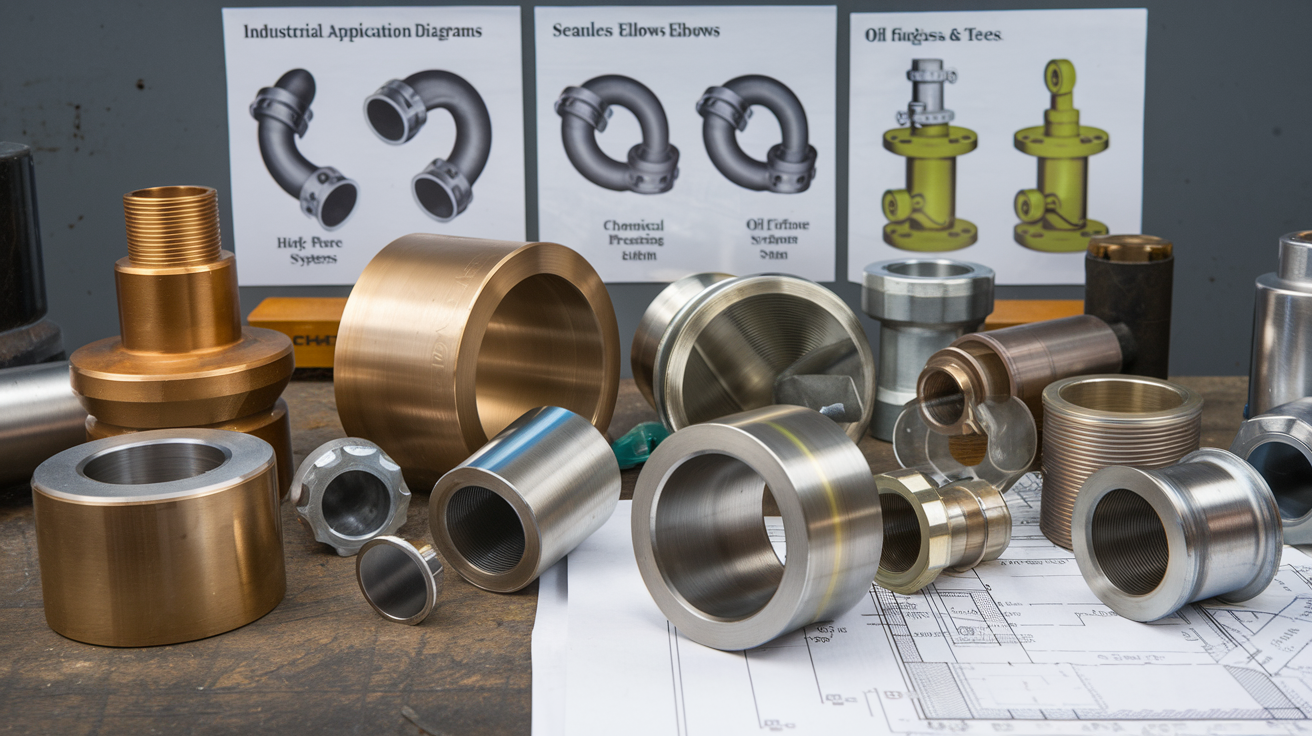
A. High-Pressure System Requirements
Picking the right seamless elbow for high-pressure systems isn’t something you can wing. These environments demand fittings that won’t fail when the pressure cranks up.
For systems operating above 3000 psi, you’ll need to focus on:
- Wall thickness: Thicker walls equal better pressure resistance
- Material grade: Look for P11, P22, or P91 chrome-moly steel elbows for extreme pressure applications
- Reinforcement: Consider reinforced elbows with extra material at stress points
90-degree seamless elbows in high-pressure systems should have a radius at least 1.5 times the pipe diameter. This reduces turbulence and pressure drop that could weaken your system.
Don’t skimp on certification. Every high-pressure elbow should come with material test certificates and pressure test documentation. Your safety depends on it.
B. Corrosive Environment Solutions
Corrosion will eat your system alive if you choose the wrong elbow. No exaggeration.
For corrosive environments, stainless steel seamless elbows are often your best bet:
- 316/316L grade: Offers superior resistance to chemical processing, salt exposure, and acidic environments
- Duplex and Super Duplex: When you need both corrosion resistance and strength
- Alloy 20: Excellent for sulfuric acid applications
The finishing matters too. A properly polished surface minimizes places where corrosive materials can accumulate and start their damage.
Consider the environment specifics. Is it wet? Salty? Full of specific chemicals? Each scenario might call for a different grade or coating.
C. High-Temperature Applications
When the heat is on, regular elbows just won’t cut it.
For high-temperature systems:
- Austenitic stainless steel (like 309, 310, 321) handles temperatures up to 2000°F
- Inconel alloys provide excellent strength and oxidation resistance above 2000°F
- Wall thickness considerations become even more crucial as metal weakens at high temps
Pay attention to thermal expansion. High-temperature elbows need room to expand and contract without creating stress points in your system.
The elbow’s manufacturing method matters more in these applications. Seamless elbows produced through hot extrusion generally handle temperature cycling better than cold-formed alternatives.
D. Food and Pharmaceutical Grade Needs
In food and pharma, it’s not just about performance—it’s about purity and safety.
Your elbows need to be:
- Hygienic: No crevices where bacteria can hide
- Polished: Often to a mirror finish (Ra < 0.5μm) for easy cleaning
- 316L нержавеющая сталь: The industry standard for its non-reactive properties
Sanitary elbows should have certification like 3-A Sanitary Standards or FDA compliance. Without proper documentation, you risk contamination or failed inspections.
Connection types matter more here. Tri-clamp fittings allow for quick disassembly during cleaning cycles, while butt-weld elbows eliminate crevices but make cleaning more challenging.
Remember that even the best seamless elbow in the wrong application is a disaster waiting to happen. Match your requirements to the elbow’s capabilities every time.
Cost-Effective Purchasing Strategies

Bulk Ordering Benefits
Smart buying starts with volume. When you need seamless elbows for your project, buying in bulk can slash your costs by 15-30%. But it’s not just about getting a discount.
Bulk orders typically come with perks like:
- Free shipping (saving you $50-200 per order)
- Priority production scheduling
- Better quality control (same batch = consistent properties)
The minimum quantity for meaningful discounts varies by manufacturer, but typically starts around:
| Elbow Size | Suggested Minimum Order |
|---|---|
| Small (≤2″) | 50-100 pieces |
| Medium (3-6″) | 25-50 pieces |
| Large (≥8″) | 10-25 pieces |
Think about your long-term needs. Even if your current project requires 30 elbows, but you’ll need similar fittings next quarter, ordering 60 now might save you more money overall.
Supplier Relationship Development
Building rapport with suppliers isn’t just nice—it’s profitable. Regular customers get perks casual buyers don’t.
Start by:
- Communicating clearly about your project specs
- Paying invoices promptly
- Providing feedback on product quality
- Being consistent with your orders
Suppliers reward loyal customers with:
- Inside information on upcoming price changes
- First access to new products
- Reserved inventory during material shortages
- Custom specs without minimum order requirements
Timing Your Purchase for Better Pricing
The seamless elbow market fluctuates based on raw material costs, just like gas prices. Time your purchases right and save big.
Many manufacturers run end-of-quarter promotions to hit sales targets. Planning your purchase for late March, June, September, or December can score you discounts of 5-15%.
Metal prices typically dip during:
- Construction off-seasons (late fall, winter)
- Following major economic reports
- During periods of low oil prices
Set up price alerts with your suppliers. When they notify you of a temporary price drop, be ready to act fast with your purchase order.
Remember—buying right before a major infrastructure announcement or trade tariff implementation usually means paying premium prices.
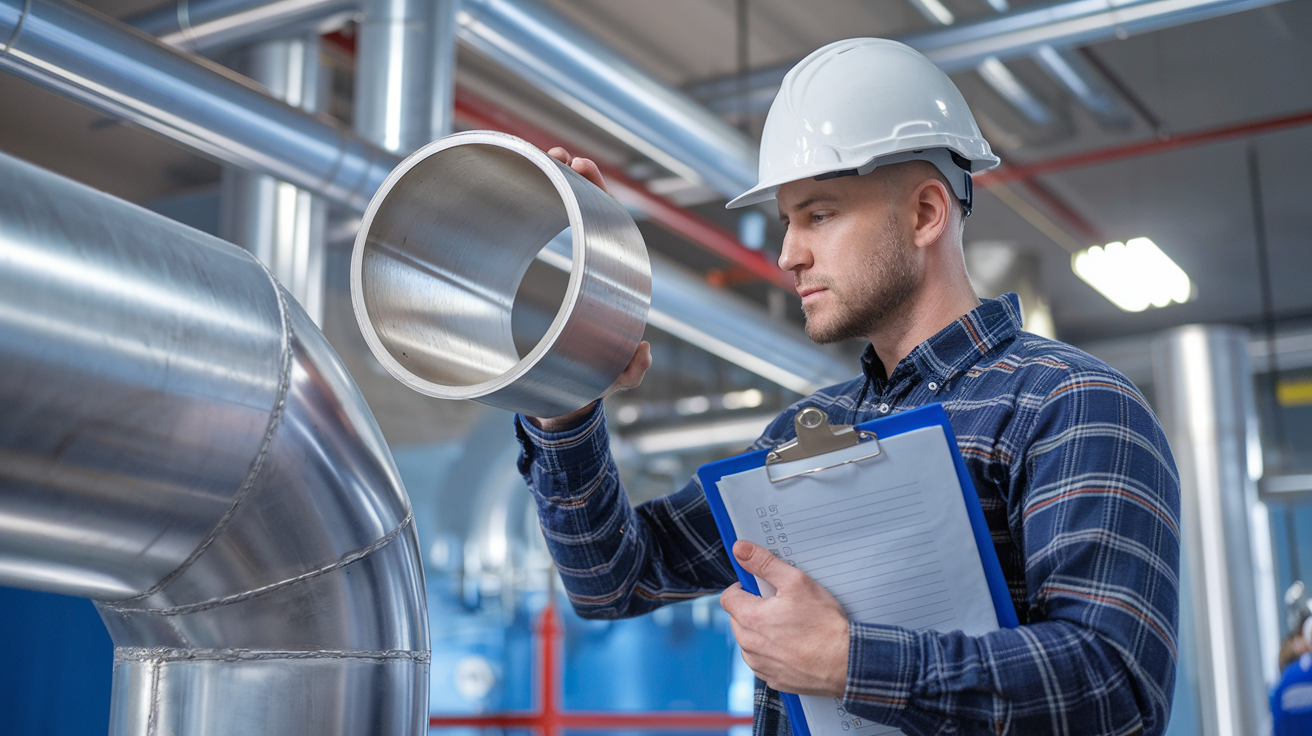
Selecting the right seamless elbow for your project doesn’t have to be overwhelming. By understanding the various types available, considering critical factors like material compatibility and pressure ratings, and evaluating quality indicators, you can make an informed decision. Remember that different applications require specific elbow configurations, and proper matching will significantly impact your system’s performance and longevity.
Take time to research suppliers, compare pricing, and consider bulk purchasing when appropriate. A well-chosen seamless elbow not only ensures the structural integrity of your piping system but also minimizes maintenance costs over time. Your project deserves components that deliver reliability and performance—make your selection count.

